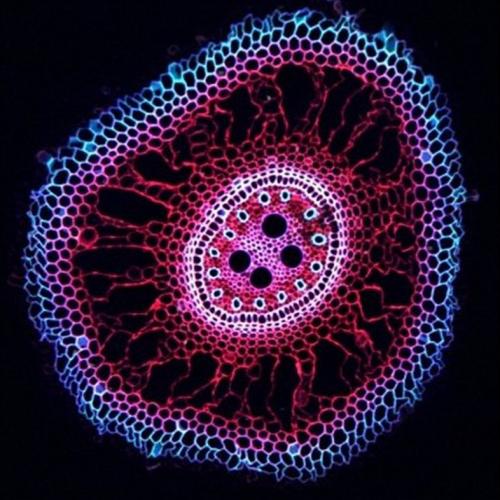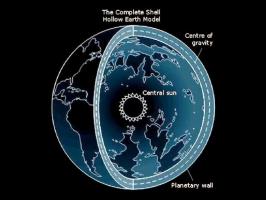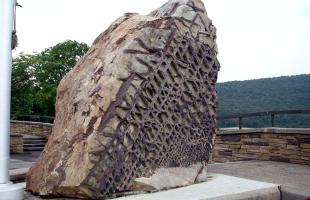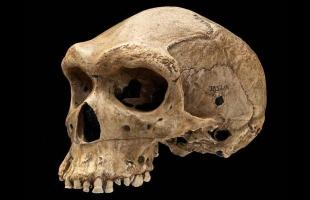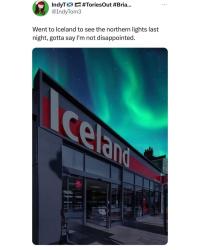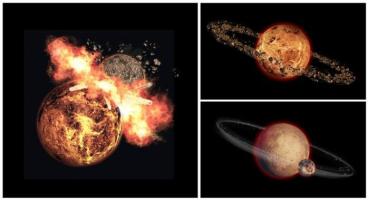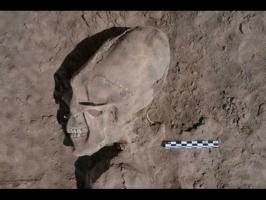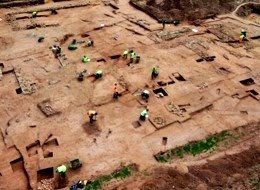Copy Link
Add to Bookmark
Report
Alife Digest Number 069

Alife Digest, Number 069
Monday, January 13th 1992
~~~~~~~~~~~~~~~~~~~~~~~~~~~~~~~~~~~~~~~~~~~~~~~~~~~~~~~~~~~~~~~~~~~~~~~~~~~
~ Artificial Life Distribution List ~
~ ~
~ All submissions for distribution to: alife@cognet.ucla.edu ~
~ All list subscriber additions, deletions, or administrative details to: ~
~ alife-request@cognet.ucla.edu ~
~ All software, tech reports to Alife depository through ~
~ anonymous ftp at polaris.cognet.ucla.edu in ~ftp/pub/alife ~
~ ~
~ List maintainers: Liane Gabora and Rob Collins ~
~ Artificial Life Research Group, UCLA ~
~ ~
~~~~~~~~~~~~~~~~~~~~~~~~~~~~~~~~~~~~~~~~~~~~~~~~~~~~~~~~~~~~~~~~~~~~~~~~~~~
Today's Topics:
Calendar of Alife-related Events
L-systems software
Some corrigenda for ALife II Proceedings
FRACTINT: L-systems Software on IBM compatible PCs
Conference: State of the Art in Ecological Modelling
----------------------------------------------------------------------
Date: Mon, 13 Jan 92 12:26:39 -0800
From: liane@cs.ucla.edu (Liane Gabora)
Subject: Calendar of Alife-related Events
**********************************************************************
CALENDAR OF ALIFE-RELATED ACTIVITIES:
Canadian AI Conference, Vancouver May 11-15, 1992
Artificial Life III, Santa Fe June 15-19, 1992
10th National Conference on AI, San Jose Jul 12-17, 1992
14th Conf of the Cognitive Science Soc, Bloomington IN July 29-Aug 1, 1992
ECAI 92, 10th European Conference on AI Aug 3-7, 1992
13th International Congress on Cybernetics, Belgium Aug 24-28, 1992
Parallel Problem Solving from Nature, Brussels Sep 28-30, 1992
State of the Art in Ecological Modelling, Kiel Germany Sep 28-Oct 2, 1992
(Send announcements of other activities to alife@cognet.ucla.edu)
**********************************************************************
------------------------------
Date: Fri, 03 Jan 1992 12:01:24 ADT
From: John Corbit <corbit@esseX.stfx.ca>
Subject: L-systems software
L-systems software
------------------
In September to November 1991 a survey was conducted on the network calling
for all available L-systems software. The survey identified L-systems programs
for the Mac, PC, VAX/VMS, and UNIX machines. The programs vary from some
which are still under development to others which are polished commercially
available packages.
1. I will be glad to send the results of the survey to anyone who requests it.
2. I would appreciate hearing about any L-systems programs not already
included in the results of the survey.
John Corbit corbit@essex.stfx.ca
------------------------------
Date: Mon, 6 Jan 92 02:00:52 -0500
From: "Peter Cariani" <peterc@chaos.cs.brandeis.edu>
Subject: Some corrigenda for ALife II Proceedings
Corrigenda for:
"Emergence and Artificial Life", P. Cariani,
Artificial Life II, First Printing
A number of errors were introduced during production of the proofs used
for the first printing. Hopefully these will be corrected for the second
printing.
Footnotes: in almost all cases, the footnote references are off by 1.
The incorrect number is one more than it should be (i.e. subtract 1 to get the
correct reference). There are also a few other reference errors (upon request).
Figure 3b: the arrows were reflected about the y-axis in production (I
have no idea how). All arrows should point from left to right. "Measurement"
should correspond to a nondeterministic state-transition from a nonsymbolic
predecessor state to two (or more) symbolic successor states. "Control"
should be a nondeterministic state transition from a symbolic predecessor
state to two or more nonsymbolic successor states. The classes of
state-transitions shown in figure 3b can be used to partition the
observed state transitions of figure 3a, so that realms of
"empirically-contingent" and "logically necessary" state-transitions
can be distiguished.
Figure 6a: This should have been a digitized photograph of Pask's
electrochemical assemblage. What is shown in the photo is a set of wires
and electrode supports with a ferrous dendritic thread growing between them.
The original photograph was of relatively poor quality, perhaps more
evocative than representational, but it nevertheless looks better than what
was printed.
If you would like a copy of the corrected figures, please send me your
surface mail address at:
eplunix!peter@eddie.mit.edu
I would also be happy to answer any questions regarding the references, or
more importantly, any comments/criticisms regarding the arguments presented.
Thanks. --Peter Cariani
------------------------------
From: Andy Clark <andycl@syma.sussex.ac.uk>
Date: Fri, 10 Jan 92 16:22:57 GMT
bcc: andycl@cogs
re: MA in Philosophy of Cognitive Science at Sussex University
UNIVERSITY OF SUSSEX, BRIGHTON, ENGLAND
SCHOOL OF COGNITIVE AND COMPUTING SCIENCES
M.A. in the PHILOSOPHY OF COGNITIVE SCIENCE
The is a one year course which aims to foster the study of foundational issues
in Cognitive Science and Computer Modelling. It is designed for students with
a background in Philosophy although offers may be made to exceptional students
whose background is in some other discipline related to Cognitive Science.
Students would combine work towards a 20,000 word philosophy dissertation with
subsidiary courses concerning aspects of A.I. and the other Cognitive
Sciences.
General Information.
The course is based in the School of Cognitive and Computing Sciences. The
School provides a highly active and interdisciplinary environment involving
linguists, cognitive psychologists, philosophers and A.I. researchers. The
kinds of work undertaken in the school range from highly practical
applications of new ideas in computing to the most abstract philosophical
issues concerning the foundations of cognitive science. The school attracts a
large number of research fellows and distinguished academic visitors, and
interdisciplinary dialogue is encouraged by several weekly research seminars.
Course Structure of the MA in Philosophy of Cognitive Science
TERM 1
Compulsory Course: Philosophy of Cognitive Science
Topic: The Representational Theory of Mind:
------------------------------
and one out of :
Artificial Intelligence Programming (Part I)
Knowledge Representation
Natural Language Syntax
Psychology I
Computer Science I
Modern Analytic Philosophy (1)
Modern European Philosophy (1)
Artificial Intelligence and Creativity
TERM 2
Compulsory Course: Philosophy of Cognitive Science (II)
Topic: Code,Concept and Process:
Philosophy, Neuropsychology and A.I.
and one out of:
Artificial Intelligence Programming (Part II)
Natural Language Processing
Computer Vision
Neural Networks
Intelligent Tutoring Systems
Psychology II
Computer Science II
Social Implications of AI
Modern Analytic Philosophy (2)
Modern European Philosophy (2)
TERM 3
Supervised work for the Philosophy
of Cognitive Science dissertation
(20,000 words)
Courses are taught by one hour lectures , two hour seminars and one hour
tutorials.
Choice of options is determined by student preference and content of first
degree. Not all options will always be available and new options may be added
according to faculty interests.
CURRENT TEACHING FACULTY for the MA
Dr A. Clark Philosophy of Cognitive Science I and II
Mr R.Dammann Recent European Philosophy
Dr M.Morris Recent Analytic Philosophy
Dr S Wood and Mr R Lutz AI Programming I
Dr B Katz Knowledge Representation
Neural Networks
Dr N Yuill Psychology I
Dr M. Scaife Psychology II
Prof M Boden Artificial Intelligence and Creativity
Social Implications of AI
Dr L Trask Natural Language Syntax \& Semantics
Dr S Easterbrook Computer Science I \& II
Dr D Weir Logics for Artificial Intelligence
Dr D Young Computer Vision
Dr B Keller Natural Language Processing
Dr Y Rogers &
Prof B du Boulay Intelligent Tutoring Systems
ENTRANCE REQUIREMENTS
These will be flexible. A first degree in Philosophy or one of the Cognitive
Sciences would be the usual minimum requirement.
FUNDING
U.K.students may apply for British Academy funding for this course in the usual
manner. Overseas students would need to be funded by home bodies.
CONTACT
For an application form, or further information, please write to Dr
Allen Stoughton at the School of Cognitive and Computing Sciences,
University of Sussex, Falmer, Brighton BN1 9QH, or phone him on (0273)
606755 ext. 2882, or email - allen@cogs.sussex.ac.uk.
------------------------------
From: shf@highlite.gotham.com (Stephen H. Foy)
Subject: FRACTINT: L-systems Software on IBM compatible PCs
Date: Sat, 11 Jan 92 22:06:23 EST
In Alife Digest 068, 31 December, 1991, Bill Paterson writes:
>In the Alife Digest 067 Dec. 4, 1991, Chris Langton inquired about
>L-systems software for Apple Macintoshes. Does anyone know about similar
>software running on IBM compatible PCs?
The freeware fractal program FRACTINT, starting with version 15, includes
an L-systems interpreter. The latest version of FRACTINT, 16.11, is available
at ftp sites and BBSs worldwide.
A copy of FRACTINT's documentation relating to L-systems is included below.
Cheers!
Stephen Foy
shf@gotham.com
3940 Washington Street
Kensington, MD, USA
20895
----------Begin FRACTINT L-systems documentation----------
These fractals are constructed from line segments using rules specified
in drawing commands. Starting with an initial string, the axiom,
transformation rules are applied a specified number of times, to produce
the final command string which is used to draw the image.
Like the type=formula fractals, this type requires a separate data file.
A sample file, FRACTINT.L, is included with this distribution. When you
select type lsystem, the current lsystem file is read and you are asked
for the lsystem name you wish to run. Press <F6> at this point if you
wish to use a different lsystem file. After selecting an lsystem, you
are asked for one parameter - the "order", or number of times to execute
all the transformation rules. It is wise to start with small orders,
because the size of the substituted command string grows exponentially
and it is very easy to exceed your resolution. (Higher orders take
longer to generate too.) The command line options "lname=" and "lfile="
can be used to over-ride the default file name and lsystem name.
Each L-System entry in the file contains a specification of the angle,
the axiom, and the transformation rules. Each item must appear on its
own line and each line must be less than 160 characters long.
The statement "angle n" sets the angle to 360/n degrees; n must be an
integer greater than two and less than fifty.
"Axiom string" defines the axiom.
Transformation rules are specified as "a=string" and convert the single
character 'a' into "string." If more than one rule is specified for a
single character all of the strings will be added together. This allows
specifying transformations longer than the 160 character limit.
Transformation rules may operate on any characters except space, tab or
'}'.
Any information after a ; (semi-colon) on a line is treated as a
comment.
Here is a sample lsystem:
Dragon { ; Name of lsystem, { indicates start
Angle 8 ; Specify the angle increment to 45 degrees
Axiom FX ; Starting character string
F= ; First rule: Delete 'F'
y=+FX--FY+ ; Change 'y' into "+fx--fy+"
x=-FX++FY- ; Similar transformation on 'x'
} ; final } indicates end
The standard drawing commands are:
F Draw forward
G Move forward (without drawing)
+ Increase angle
- Decrease angle
| Try to turn 180 degrees. (If angle is odd, the turn
will be the largest possible turn less than 180 degrees.)
These commands increment angle by the user specified angle value. They
should be used when possible because they are fast. If greater
flexibility is needed, use the following commands which keep a
completely separate angle pointer which is specified in degrees.
D Draw forward
M Move forward
nn Increase angle nn degrees
/nn Decrease angle nn degrees
Color control:
Cnn Select color nn
<nn Increment color by nn
>nn decrement color by nn
Advanced commands:
! Reverse directions (Switch meanings of +, - and , /)
@nnn Multiply line segment size by nnn
nnn may be a plain number, or may be preceded by
I for inverse, or Q for square root.
(e.g. @IQ2 divides size by the square root of 2)
[ Push. Stores current angle and position on a stack
] Pop. Return to location of last push
Other characters are perfectly legal in command strings. They are
ignored for drawing purposes, but can be used to achieve complex
translations.
---------End FRACTINT L-systems documentation---------
------------------------------
Date: 13 Jan 92 11:41 +0100
From: "13-JAN-1992 11:40:40.12" <noe33@rz.uni-kiel.dbp.de>
Subject: Conference: State of the Art in Ecological Modelling
International Society for Ecological Modelling (ISEM)
International Conference on the
STATE OF THE ART IN ECOLOGICAL MODELLING
September 28, 1992 through October 2, 1992
Ecosystem Research Center, Kiel University, Kiel, Germany,
Call for Papers
Specific Themes of the conference:
==================================
1. Modelling and ecosystem theory
1.1. Theoretical use of ecological models
1.2. Methods of modelling biocenotical interactions
2. Models as parts of integrated systems - techniques and concepts
2.1. Coupling of models
2.2. Coupling of models and knowledge-based systems, object-oriented systems,
fuzzy data set systems and application of databases
2.3. Geographic Information Systems
2.4. Coupling of models of different scales (ecosystem-landscape-watershed)
3. Models of specific problems and ecosystems
lakes, marine systems, wetlands etc.
4. Practical use of models
4.1. Management models
4.2. Models for environmental planning
4.3. Models E.I.A.
4.4. Models applied to ecological engineering
5. Global modelling
5.1. Modelling the greenhouse effect
5.2. Modelling global changes
5.3. Modelling the ozone layer
6. Ecological engineering
6.1. Waste water treatment by ecol. engin. methods
6.2. Restoration of lakes
6.3. Treatment of toxic waste by ecological engineering methods
A key note lecture will be presented in plenum for each of the
specific topics at the start of the morning session. Other papers
will be presented in 2-3 parallel sessions. Poster sessions will be
arranged according to the needs. An excursion to the experimental
site of "Ecosystem Research at the Bornhoeved Lakes Area" will be
included in the program.
Abstracts of papers and posters to be presented at the conference should
be sent to the address below not later than May 1, 1992.
ORGANIZING COMMITEE:
====================
K. Bellmann, Berlin, Germany
G. Bendoricchio, Padova, Italy
H. Bossel, Kassel, Germany
O. Fraenzle, Kiel, Germany
S.E. Joergensen, Copenhagen, Denmark
W. Mitsch, Columbus, USA
F. Mueller, Kiel, Germany
O. Richter, Braunschweig, Germany
W. Windhorst, Kiel, Germany
CONFERENCE FEE:
===============
NON-ISEM members: 460 DM (270 $)
ISEM members: 400 DM (235 $)
Students: 60 DM ( 35 $)
For registration after July 1, 1992 add 60 DM
For cancellations befors July 1, full refund
The conference fee includes excursion, beverage at breaks, conference
material incl. booklet of abstracts, Proceedings to be published 8-12
months after the conference (not included in students rate)
Conference language is English.
REGISTRATION FORM
=================
Name:_________________________________________
Address:_________________________________________
_________________________________________
Institution:_________________________________________
_________________________________________
ISEM-member: ( ) Yes ( ) No
Presentation of paper: ( ) Yes ( ) No
Presentation of poster: ( ) Yes ( ) No
RESERVATION OF HOTEL:
A (150-200 DM, 90-120 $):_____ from ____________ to _____________ (date)
B (100-150 DM, 60-90 $):_____ from ____________ to _____________ (date)
C (75-100 DM, 45-60 $):_____ from ____________ to _____________ (date)
Registration fee encl. ( )
will be transferred (payable as DM) ( )
Please send this form to:
Projektzentrum Oekosystemforschung
Schauenburgerstr. 112
D-2300 KIEL
Germany
Fax: Germany-431-880-4083
E-Mail: noe33@rz.uni-kiel.dbp.de
schorsch@oeko2.informatik.uni-kiel.dbp.de
georg@geki.toppoint.de
==============================================================================
Personal p.s.: There will be a special working group on "The use of new
methods in computer science for ecological modelling", therefore
I would highly recommend the participation of ALifers at this
conference. Practitioners would profit from the theortical work of
ALifers and Alifers would get new ideas about practical applications.
Georg Hoermann
------------------------------
End of ALife Digest
*******************








